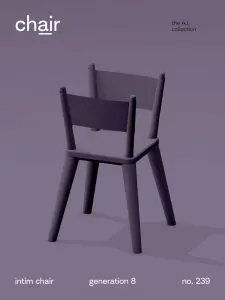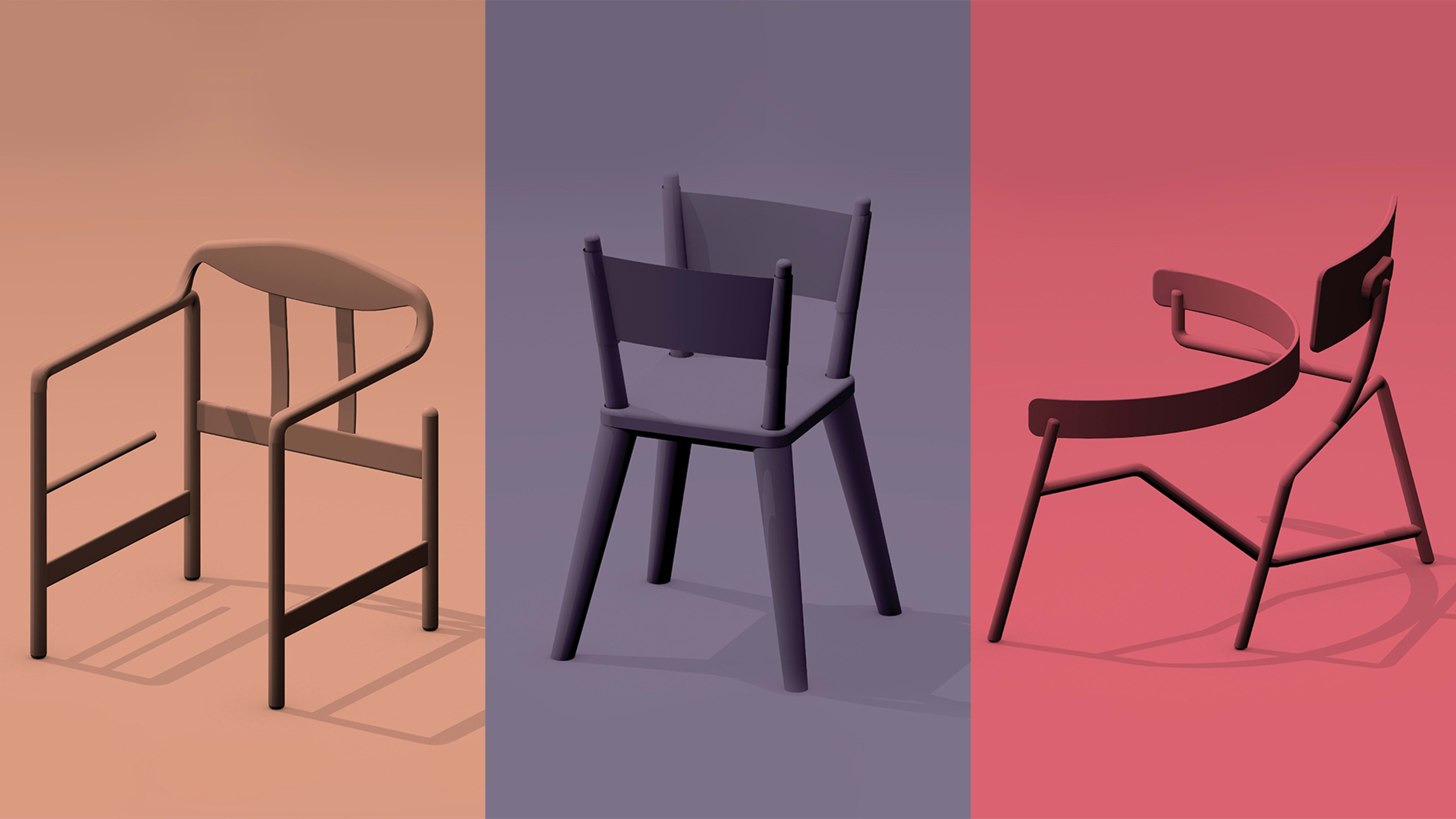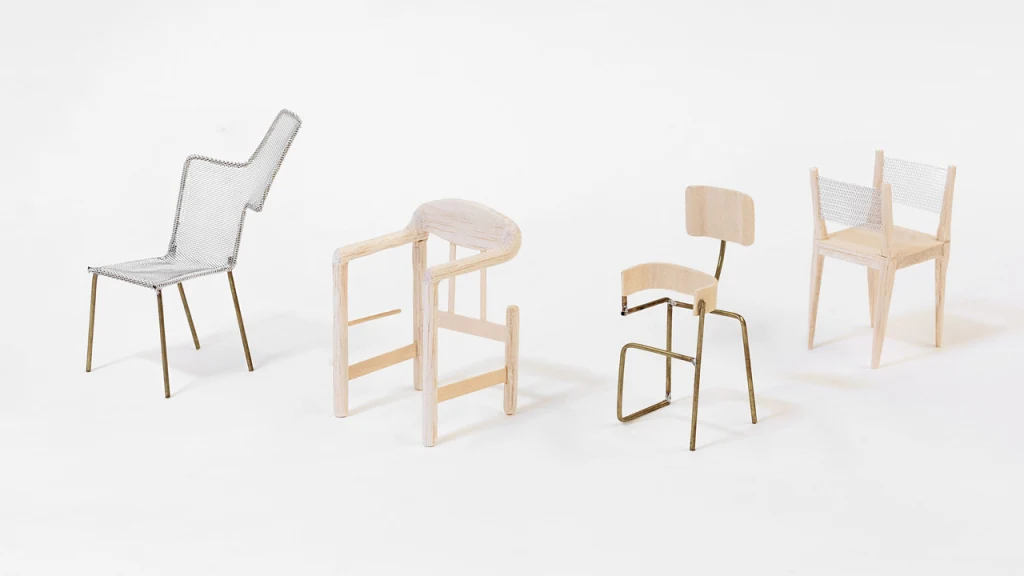Is there an object of design more commonly used or celebrated than the chair? For many renowned designers and architects, a single chair can be their piece de resistance–and prized pieces are known to even fetch millions of dollars on the secondary market. An archetype of design, chairs can be seen as little manifestos of larger ideas, documenting a maker’s approach to craft, construction, materiality, and place in history; act as a form of storytelling or signifier of status, and an artifact of how we live.
More humbly, a chair can just be a thing we sit on–and as they serve a pretty basic function with reasonably limited variation, designers Philipp Schmitt and Steffen Weiss set out to see if a set of neural networks could measure up to the creative mystique of a famous designer and create a modern “design classic.” It’s an exercise that provokes many questions on what we value and define as “good design,” that very human blend of innovation, function, and artistry. Could a bot produce an object as symbolically rich as a chair, and with the aesthetic proficiency of an Eames or Breuer design? It’s 2018, so we don’t have to wonder.
[Image: courtesy Philipp Schmitt and Steffen Weiss]For their chAIr Project, Schmitt and Weiss, based in New York and Berlin, collaborated for several months via Skype to create a generative neural network (GAN), then trained it with a dataset of 562 chair designs from the 20th century, scraped from Pinterest boards. The GAN, the designers explain, consists of two neural networks: The first is programmed to look at the images and learn to generate similar ones, while the other determines if the generated image looks enough like a chair, and attempts to refine it if not.
Based on these two variables, the algorithm generated hundreds of resulting forms that are more abstract, sculptural collage than functional designs: The sketches appear as purely associative objects that mash up familiar components–the tapered leg of a midcentury classic, the curved wood backing of a Hans Wegner design, or the bent tubular steel of a Mies van der Rohe chair–scrambled up pell-mell and reassembled to create wonky new designs. “This creates a lot of potential for our human imaginations to fill in the details,” says Schmitt, who then took a selection of the AI-generated chairs and refined them into 3D sketches, eventually factoring in real-world variables and constraints, such as material properties and physics, to mock up four miniature-scale prototypes in balsa wood, brass tube, and aluminum mesh.

The four resulting pieces, a collaboration between human and AI, while less fantastical than the computer’s original sketches, remain somewhere between reality and fantasy, and sort of what you imagine a chair would look like in the hands of Escher: newfangled arm and backrests in more places than needed, and sometimes in configurations that skew dimensions and prevent someone from being able to actually sit in it. It’s a brilliant visual mashup of design history’s greatest hits and common cliches, speaking a specific language yet somehow making no sense at all.
While other designers toying with AI have aspired to show the humorous, fashionable, and expressive potentials of machine learning, the chAIr Project is irreverently interested in exploring the limitations of technology–as well as how automation might be used as a collaborative artistic tool, rather than a replacement for designers.
“I was already experimenting with machine learning in my own research, and found it fascinating how this technology, over and over again, gets hyped for seemingly being able to compute some truth about the world that computers couldn’t figure out previously, and how these efforts often go spectacularly wrong,” says Schmitt. “Attempting to ‘generate a design classic’ was an absurd commentary on the idea of [machine learning]’s apparent omnipotence, and the chair as an archetype of designed object was a good subject for a case study.”

Instead of creating functional constraints to the algorithm, as Autodesk’s Project Dreamcatcher does, for example, he and Weiss designed the program to operate purely by visual means, hoping to generate chair designs that act more like a mood board of abstract ideas for further refinement. Much in the way the Surrealists practiced frottage or tapped their unconscious to uncover associative or imaginative ideas beyond rationality, the duo suggest that AI could be used as an indirect tool and “visual prompt” to further enrich a designer’s creative process.
As a next step, Schmitt and Weiss plan to develop full-scale prototypes of their four designs with a traditional Danish woodworker, emphasizing that artificial intelligence is just one part of the overall design process.
“Many famous designers have designed chairs, and one could argue that there have been enough chair designs in the world for quite a while. Yet, designers still design chairs. They are an expression of a person, a philosophy or state of mind, a time and place in history–like a painting,” Schmitt muses. “In my opinion, chair designs will remain expressions of human ingenuity, but some of the iconic designs of our current century might very well be designed with, or even entirely by, machines.”
Recognize your brand’s excellence by applying to this year’s Brands That Matter Awards before the early-rate deadline, May 3.








